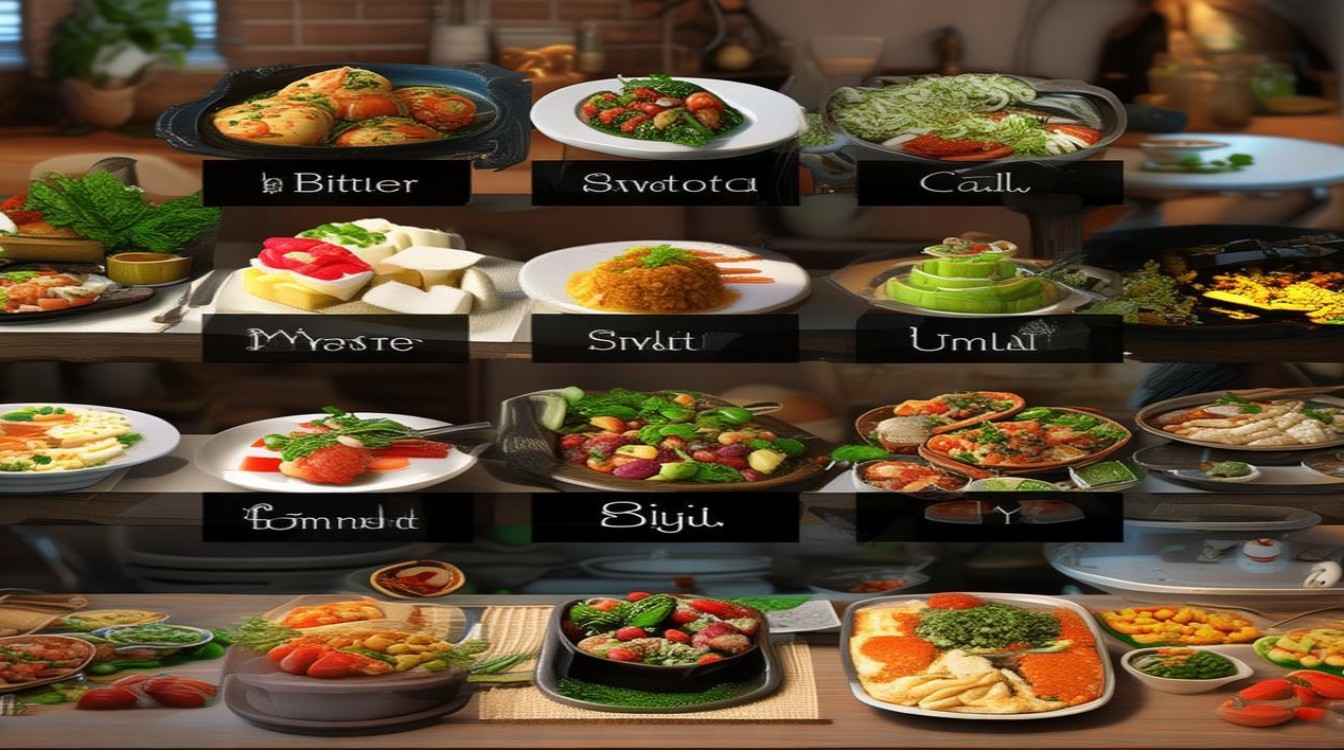When we talk about food, the right vocabulary can make all the difference. Whether you're a food critic, a chef, or simply someone who enjoys a good meal, knowing how to describe flavors accurately enhances the experience. English offers a rich variety of words to capture the nuances of taste, from the simplest sweetness to the most complex umami.

Basic Taste Categories
Before diving into specific words, it helps to understand the five fundamental tastes:
- Sweet – Sugary, honeyed, or caramel-like.
- Sour – Tangy, tart, or acidic.
- Salty – Briny, savory, or seasoned.
- Bitter – Sharp, astringent, or robust.
- Umami – Meaty, savory, or rich.
These categories form the foundation, but the real magic lies in the descriptive words that bring flavors to life.
Words for Sweet Flavors
Sweetness isn’t just about sugar—it can be delicate, rich, or even floral.
- Honeyed – Smooth and golden, like honey.
- Caramelized – Deep, browned sugar notes.
- Fruity – Naturally sweet, like berries or mangoes.
- Vanilla – Warm, creamy, and comforting.
- Syrupy – Thick and intensely sweet.
A dessert might be luscious (richly sweet) or cloying (overly sweet), depending on balance.
Words for Sour and Tangy Flavors
Acidity brightens dishes, adding freshness or sharpness.
- Zesty – Lively citrus notes.
- Tart – Sharp, like green apples.
- Vinegary – Pungent and tangy.
- Fermented – Complex sourness, like kimchi.
- Citrusy – Refreshing lemon or lime tones.
A well-balanced dish might have a bright acidity, while an overly sour one could be puckering.

Words for Salty and Savory Flavors
Salt enhances other flavors, but the right word depends on the type of saltiness.
- Briny – Ocean-like, from seafood.
- Smoky – Deep, charred saltiness.
- Seasoned – Well-balanced salt and spices.
- Cured – Preserved saltiness, like bacon.
- Umami-rich – Meaty, brothy depth.
A dish can be boldly savory or subtly salted, depending on preparation.
Words for Bitter Flavors
Bitterness adds sophistication but must be balanced.
- Earthy – Like dark greens or roots.
- Robust – Strong, like dark coffee.
- Astringent – Drying, like black tea.
- Herbal – Bitter greens or herbs.
- Toasted – Slightly charred bitterness.
A well-crafted bitter note can be complex, while an unbalanced one might be harsh.
Words for Spicy and Pungent Flavors
Heat and intensity play a big role in flavor profiles.
- Fiery – Intensely spicy.
- Peppery – Sharp, like black pepper.
- Pungent – Strong, like garlic or onions.
- Zingy – Lively, with a kick.
- Smoldering – Slow-building heat.
Spice can be invigorating or overpowering, depending on preference.

Words for Rich and Creamy Flavors
Indulgent textures often accompany deep flavors.
- Buttery – Smooth and rich.
- Velvety – Silky and luxurious.
- Decadent – Extremely rich.
- Luscious – Thick and flavorful.
- Silky – Smooth and well-blended.
A sauce might be unctuous (richly fatty) or light if balanced well.
Words for Fresh and Light Flavors
Not all food is heavy—some tastes are crisp and clean.
- Crisp – Fresh, like apples.
- Refreshing – Cooling, like mint.
- Delicate – Subtle and light.
- Airy – Light and fluffy.
- Juicy – Bursting with moisture.
A salad might be vibrant, while a broth could be clean-tasting.
Combining Flavors for Depth
Great dishes often blend multiple tastes. A tangy-sweet glaze, a smoky-spicy rub, or a bitter-sweet dessert all show how flavors interact. Words like:
- Balanced – Harmonious mix.
- Layered – Multiple flavor notes.
- Nuanced – Subtle complexity.
help describe sophisticated dishes.

Cultural Influences on Flavor Descriptions
Different cuisines have unique ways of describing taste.
- Japanese – "Umami" is central.
- Indian – Spices create "masaledar" (flavorful) dishes.
- Mexican – "Picante" (spicy) and "ahumado" (smoky).
- Italian – "Saporito" (tasty) and "cremoso" (creamy).
Understanding these terms helps appreciate global cuisines.
How to Use These Words Effectively
When describing food:
- Be specific – "Citrusy" is better than "sour."
- Consider texture – "Crispy" vs. "crunchy."
- Think about aroma – "Fragrant" herbs vs. "pungent" garlic.
A well-chosen word makes descriptions vivid.
The right vocabulary turns a simple meal into an experience. Whether you're writing a menu, reviewing a restaurant, or just savoring a dish, these words help articulate what makes food memorable. Flavor is more than taste—it's an expression of culture, technique, and creativity. Mastering these terms lets you appreciate every bite more deeply.



